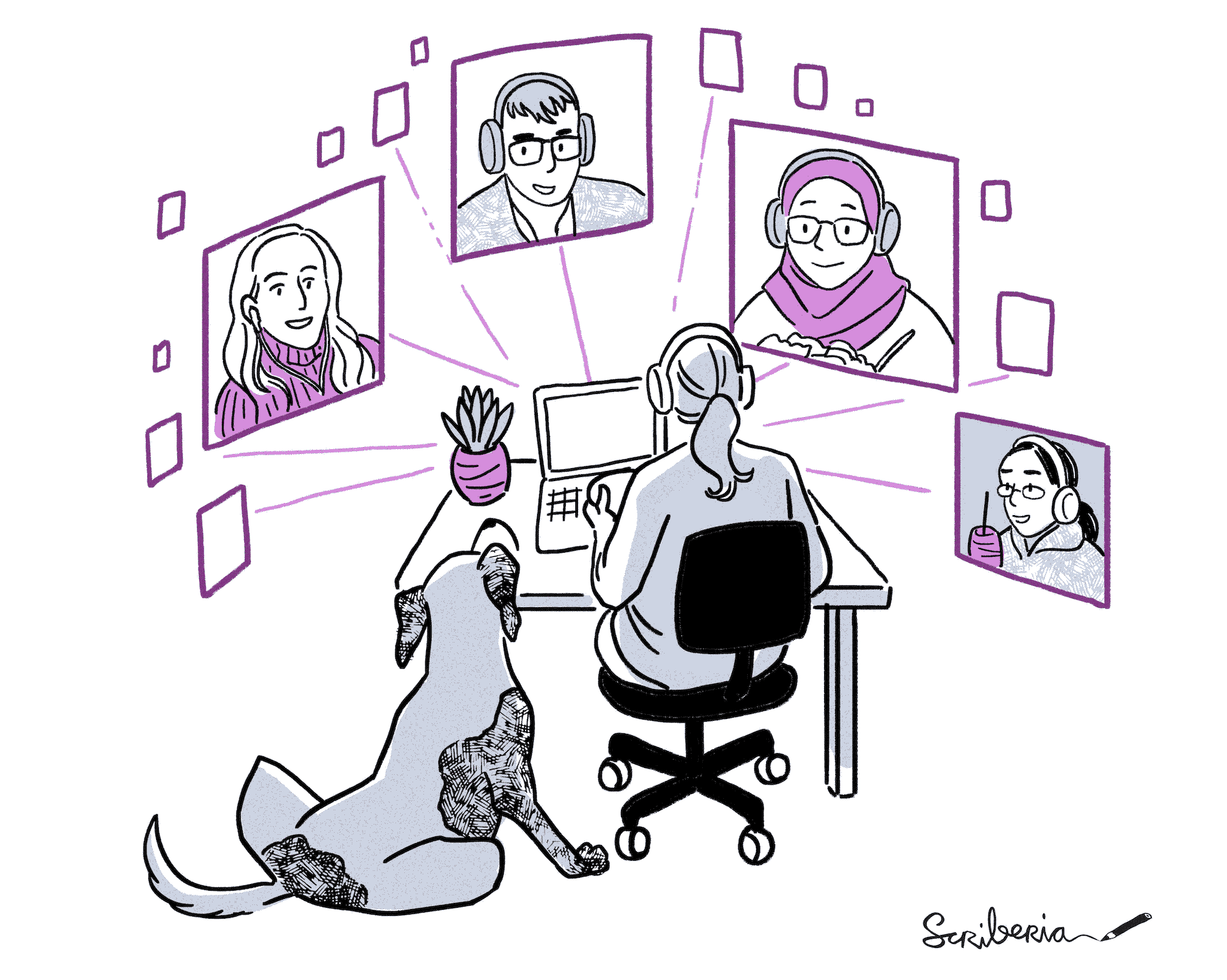When a team is working remotely, they can get together at specific times for “coffee chats”. These are scheduled in advance so that everyone can plan their work and other meetings around them as needed and specifically have no agenda. The purpose is to share a social break together. Though we assume ‘virtual first’ approach for inclusive events, these recommendations can be used for remote or in-person meetings as well with minor changes to adapt to a physical location.

Figure 1:Informal Online Coffee Chats. The Turing Way project illustration by Scriberia. Used under a CC-BY 4.0 licence. DOI: The Turing Way Community & Scriberia (2024).
Motivation¶
All work and no play makes teams anxious and sad. If all of your group’s conversations revolve around work and are scheduled as meetings, the team will lose both the serendipity of informal knowledge sharing and the enjoyment of taking a break away from their work. It isn’t just fun, their productivity will be higher if they take regular breaks and socialise with others! See this post to discover some reasons why it is good to take breaks.
Design the coffee chat¶
The first step in running a coffee chat is considering the purpose of the social break, who will be invited and to set the time for the conversation. Conversations, where anyone can join, may be what you want.
In March 2020, during the COVID-19 pandemic, Kirstie Whitaker hosted online morning coffee chats on Zoom, which she promoted on Twitter (now X). Different people joined at 7:40 am every morning to match her early morning chats at the Turing Institute between when her train arrived and when she usually started working. The purpose of these calls was to have social contact with anyone else who was up early and looking for motivation to get started. It didn’t matter who came along, everyone was invited to join for 20 minutes.
Joining a conversation where anyone can join is quite a daunting proposition for some people. If the purpose of the coffee chat is to build connections with a team, you may want to consider restricting the invitation to the specific group members. Although this appears less open it may be more inclusive for building a safe space for all members. Knowing who is going to be at the coffee chat on a regular basis makes attending the coffee chats more appealing. Therefore, introverted and less confident members are more likely to participate in the conversation. You are more likely to build trust within a group if they can make accurate predictions about who they will be interacting with during the break. A good example of this purpose is coffee chats for members of a research group.
Finally, the safest spaces are 1:1 conversations. If the purpose of your coffee chat is to check in with a friend or colleague, particularly if you are worried about how they are doing, consider organising an individual and private coffee chat. Remember that the purpose is not to talk about work or to progress an ongoing collaborations. The purpose of individual coffee chats is to make each other feel supported and heard in ways that can be difficult to replicate in an online space.
Schedule the coffee chat¶
Once you know what you want the purpose of the coffee chat to be, you can schedule it.
- Identify the medium: For online calls, use tools that allow you to have online face to face conversations with others, such as Zoom, Google meet and Facetime. Find recommendation in Tools for Collaboration.
- Maintain consistency: Try to ensure that the times are predictable if not always identical across different days.
- Invite people: Send a calendar invitation to the invited participants so they are reminded to take the break at that time.
- The Turing Way Community, & Scriberia. (2024). Illustrations from The Turing Way: Shared under CC-BY 4.0 for reuse. Zenodo. 10.5281/ZENODO.3332807